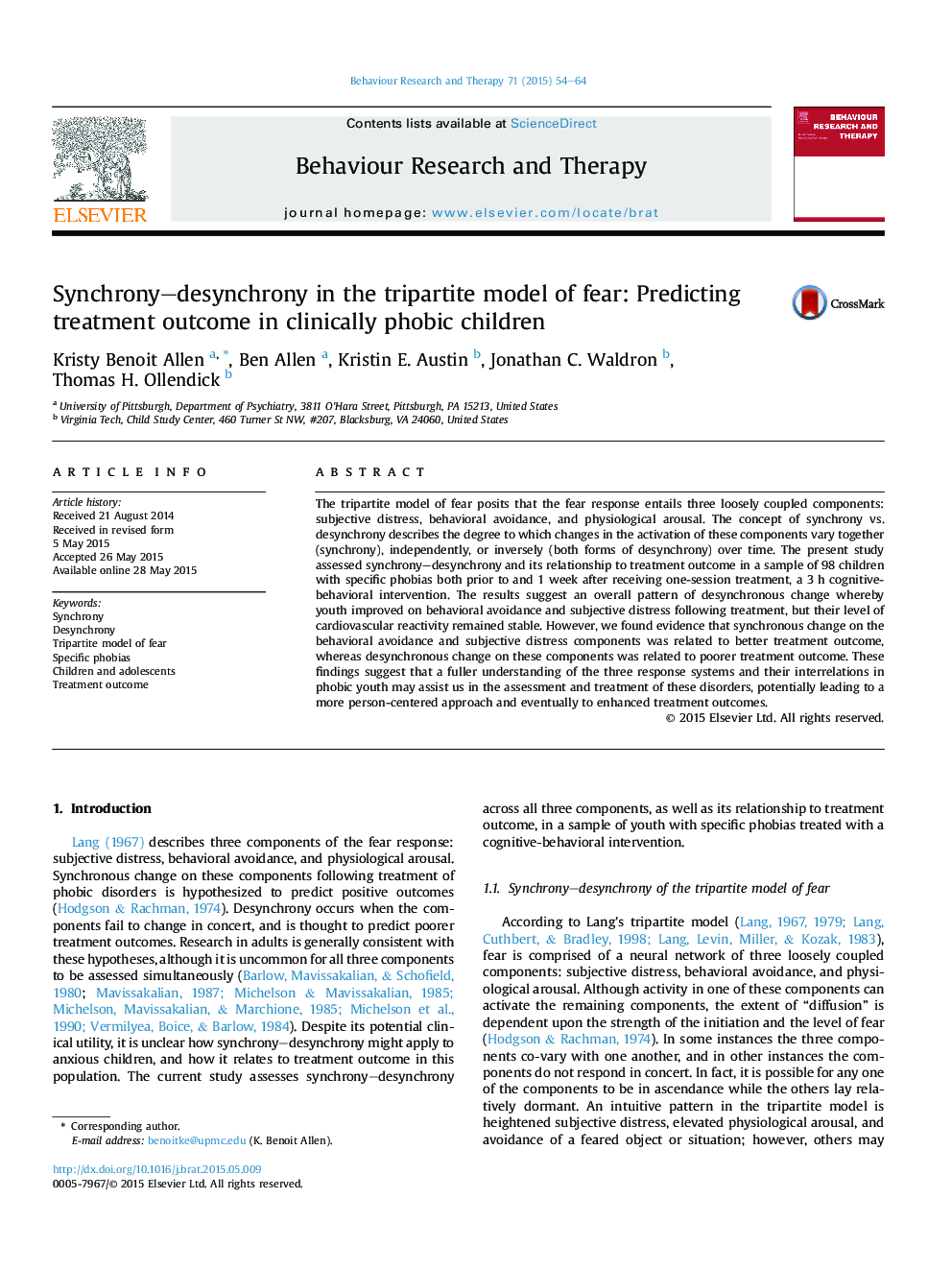| Article ID | Journal | Published Year | Pages | File Type |
|---|---|---|---|---|
| 7262308 | Behaviour Research and Therapy | 2015 | 11 Pages |
Abstract
The tripartite model of fear posits that the fear response entails three loosely coupled components: subjective distress, behavioral avoidance, and physiological arousal. The concept of synchrony vs. desynchrony describes the degree to which changes in the activation of these components vary together (synchrony), independently, or inversely (both forms of desynchrony) over time. The present study assessed synchrony-desynchrony and its relationship to treatment outcome in a sample of 98 children with specific phobias both prior to and 1 week after receiving one-session treatment, a 3Â h cognitive-behavioral intervention. The results suggest an overall pattern of desynchronous change whereby youth improved on behavioral avoidance and subjective distress following treatment, but their level of cardiovascular reactivity remained stable. However, we found evidence that synchronous change on the behavioral avoidance and subjective distress components was related to better treatment outcome, whereas desynchronous change on these components was related to poorer treatment outcome. These findings suggest that a fuller understanding of the three response systems and their interrelations in phobic youth may assist us in the assessment and treatment of these disorders, potentially leading to a more person-centered approach and eventually to enhanced treatment outcomes.
Related Topics
Health Sciences
Medicine and Dentistry
Psychiatry and Mental Health
Authors
Kristy Benoit Allen, Ben Allen, Kristin E. Austin, Jonathan C. Waldron, Thomas H. Ollendick,
